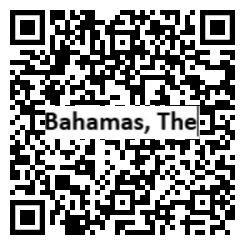Introduction
Background
Lucayan Indians inhabited the islands when Christopher COLUMBUS first set foot in the New World on San Salvador in 1492. British settlement of the islands began in 1647. The islands became a colony in 1783. Since attaining independence from the UK in 1973, The Bahamas has prospered through tourism, international banking, and investment management.
Geography
Area
total: 13,880 sq km
land: 10,010 sq km
water: 3,870 sq km
Climate
tropical marine; moderated by warm waters of Gulf Stream
Natural resources
salt, aragonite, timber, arable land
People and Society
Population
358,508 (2023 est.)
Ethnic groups
African descent 90.6%, White 4.7%, mixed 2.1%, other 1.9%, unspecified 0.7% (2010 est.)
Languages
English (official), Creole (among Haitian immigrants)
Religions
Protestant 69.9% (includes Baptist 34.9%, Anglican 13.7%, Pentecostal 8.9% Seventh Day Adventist 4.4%, Methodist 3.6%, Church of God 1.9%, Brethren 1.6%, other Protestant .9%), Roman Catholic 12%, other Christian 13% (includes Jehovah's Witness 1.1%), other 0.6%, none 1.9%, unspecified 2.6% (2010 est.)
Population growth rate
1.06% (2023 est.)
Government
Government type
parliamentary democracy under a constitutional monarchy; a Commonwealth realm
Capital
name: Nassau
Executive branch
chief of state: King CHARLES III (since 8 September 2022); represented by Governor-General Cynthia A. PRATT (since 1 September 2023)
head of government: Prime Minister Philip DAVIS (since 17 September 2021)
Legislative branch
description: bicameral Parliament consists of:
Senate (16 seats; members appointed by the governor-general - 9 selected on the advice of the prime minister, 4 on the advice of the leader of the opposition party, and 3 on the advice of the prime minister in consultation with the opposition leader; members serve 5-year terms)
House of Assembly (39 seats; members directly elected in single-seat constituencies by simple majority vote to serve 5-year terms)
Economy
Economic overview
high-income tourism and financial services economy; major income inequality; strong US bilateral relations; several tax relief programs; targeted investment in agriculture, energy, light manufacturing, and technology industries
Real GDP (purchasing power parity)
$12.323 billion (2021 est.)
$10.836 billion (2020 est.)
$14.225 billion (2019 est.)
Real GDP per capita
$30,200 (2021 est.)
$26,700 (2020 est.)
$35,200 (2019 est.)
Agricultural products
sugar cane, grapefruit, vegetables, bananas, tomatoes, poultry, tropical fruit, oranges, coconuts, mangoes/guavas
Industries
tourism, banking, oil bunkering, maritime industries, transshipment and logistics, salt, aragonite, pharmaceuticals
Exports
$3.202 billion (2021 est.)
$1.65 billion (2020 est.)
$5.164 billion (2019 est.)
Exports - partners
United States 26%, Germany 16%, Singapore 13%, Poland 13%, Thailand 9% (2021)
Exports - commodities
refined petroleum, ships, aluminum, lobsters and crawfish, styrene polymers (2021)
Imports
$4.924 billion (2021 est.)
$3.411 billion (2020 est.)
$4.84 billion (2019 est.)
Imports - partners
United States 37%, South Korea 12%, Germany 9%, China 7%, Russia 6% (2021)
Imports - commodities
refined petroleum, ships, aircraft, crude petroleum, floating docks (2021)
Exchange rates
Bahamian dollars (BSD) per US dollar -
Exchange rates:
1 (2021 est.)
1 (2020 est.)
1 (2019 est.)
1 (2018 est.)
1 (2017 est.)
Page last updated: Wednesday, December 06, 2023
